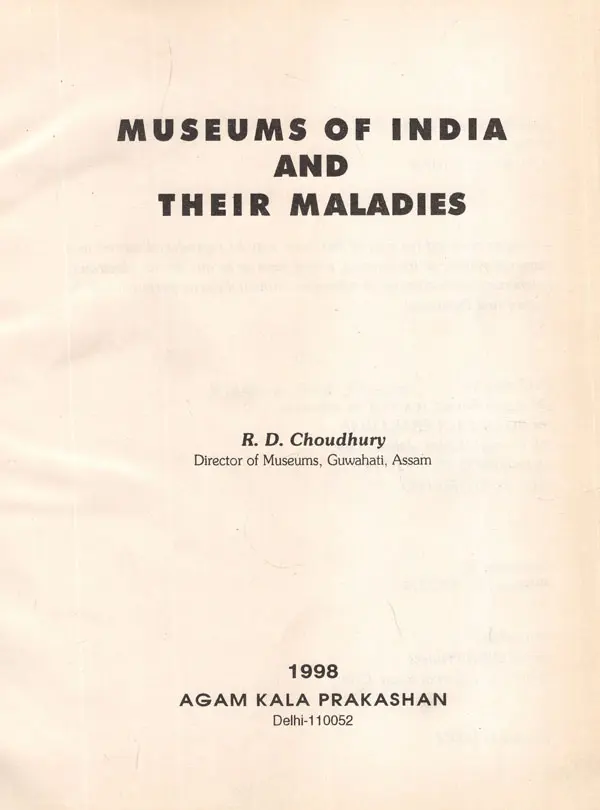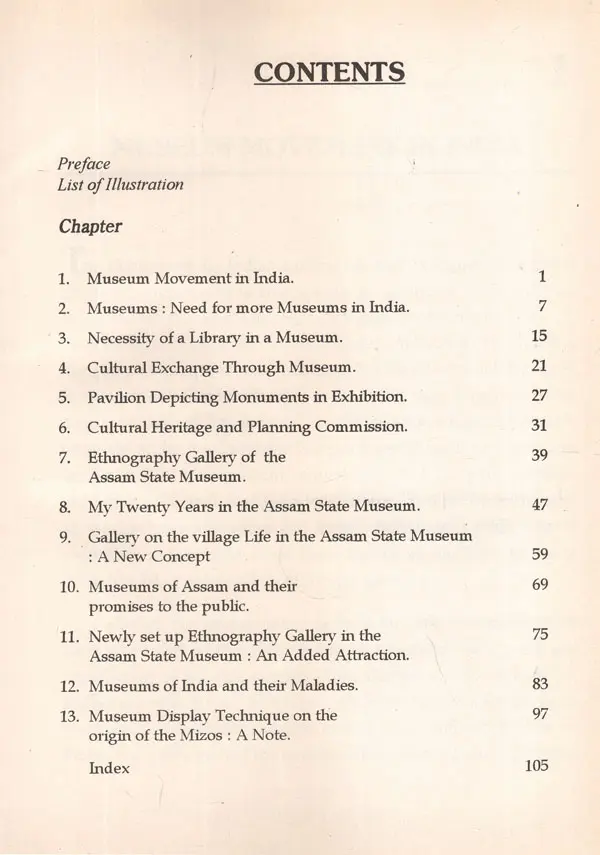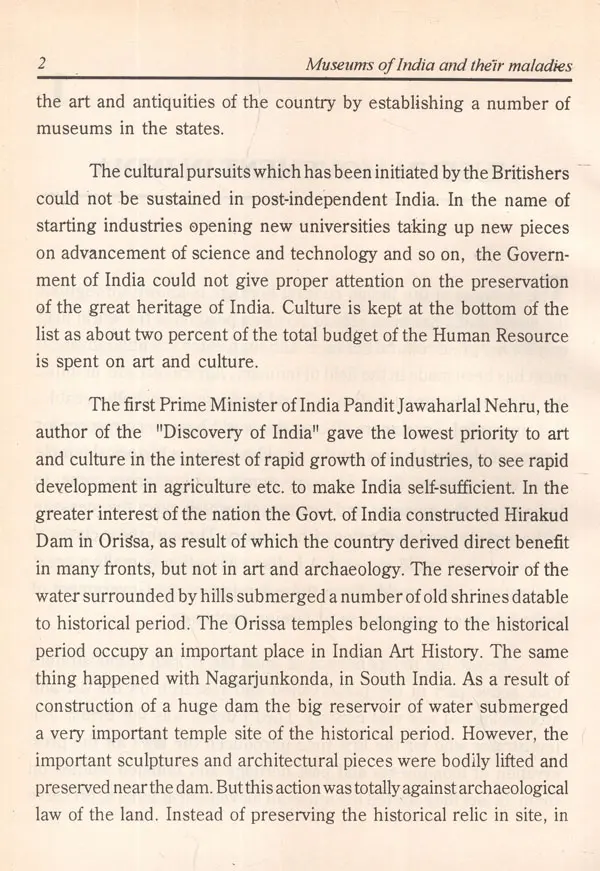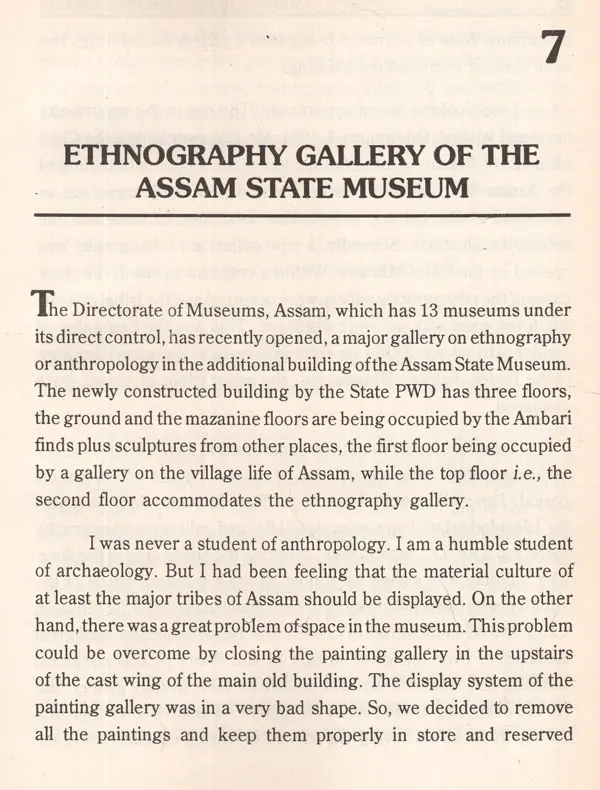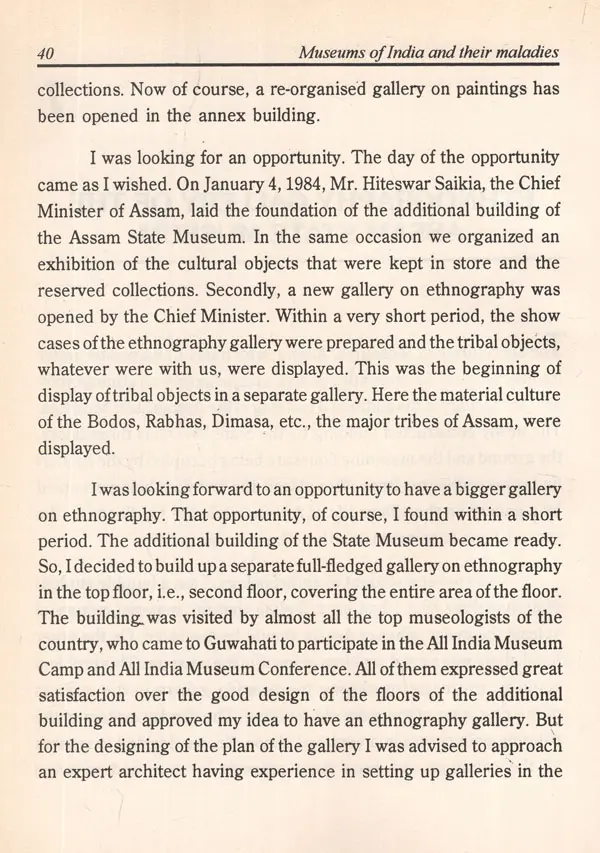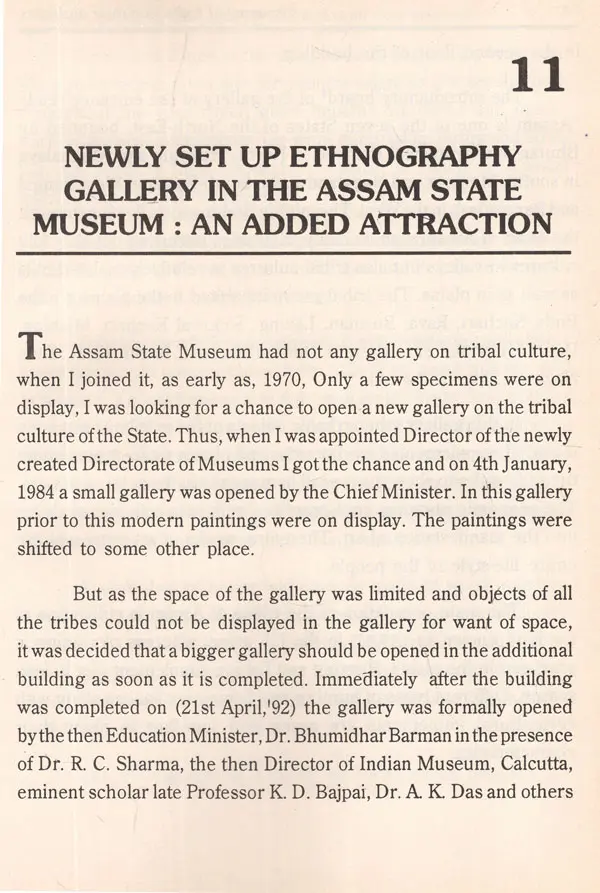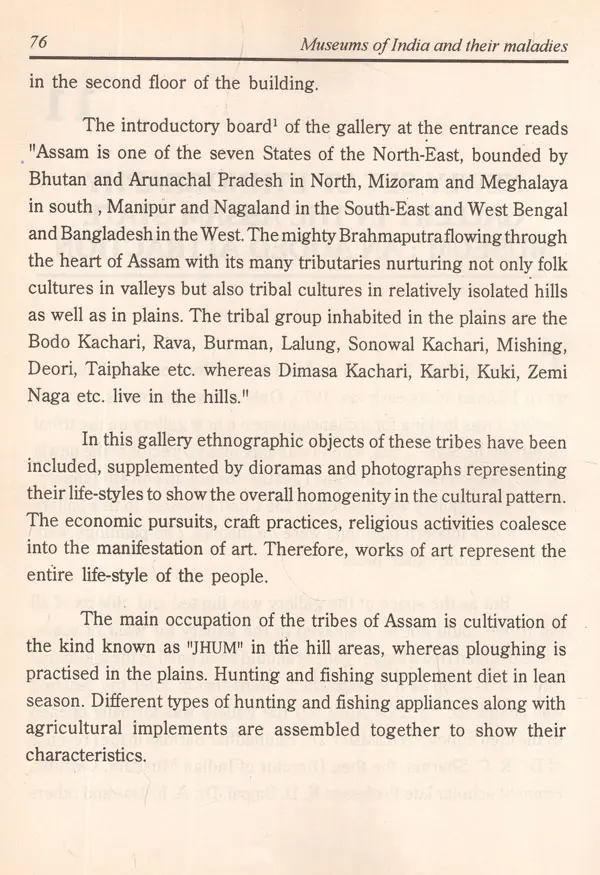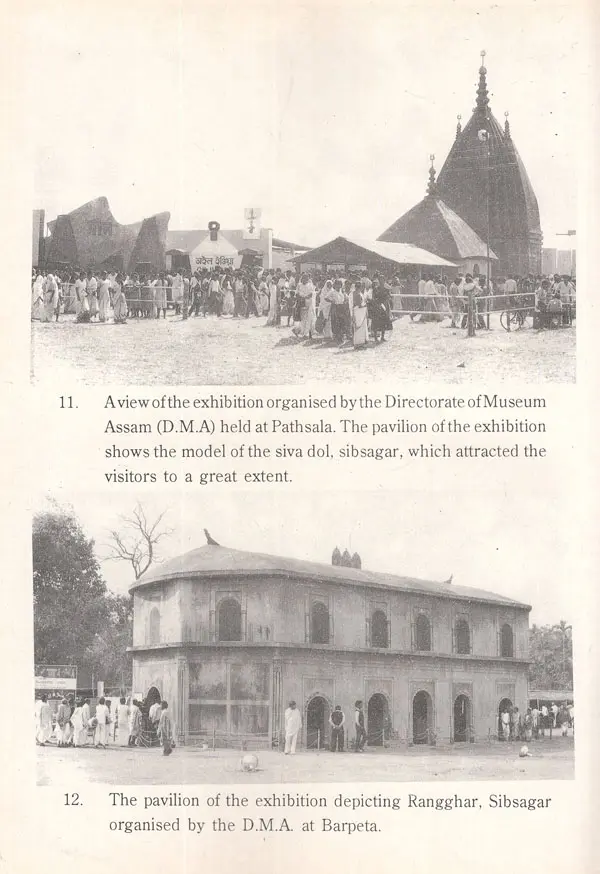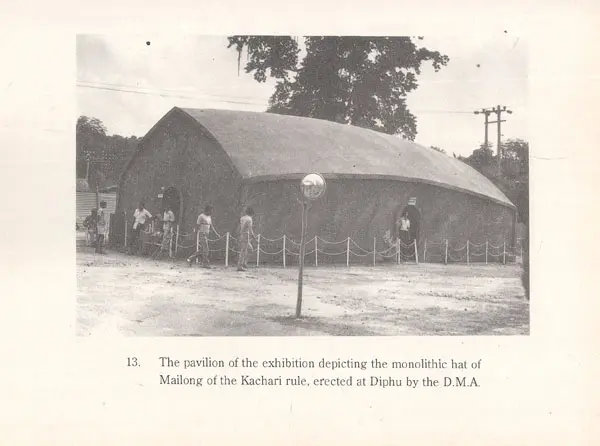
Museums of India and Their Maladies (An Old and Rare Book)
Book Specification
| Item Code: | UAO478 |
| Author: | R. D. Choudhury |
| Publisher: | Agam Kala Prakashan, Delhi |
| Language: | English |
| Edition: | 1998 |
| ISBN: | 8173200378 |
| Pages: | 156 (B/W Illustrations) |
| Cover: | HARDCOVER |
| Other Details | 10.00 X 7.50 inch |
| Weight | 570 gm |
Book Description
The Latin word 'museum' is derived from the Greek work 'museum' in which it means a temple dedicated to the Muses, or the Greek goddesses of the arts and sciences. This word 'museum' is thus the most apt word for the modern storehouses of the works of nature and man in their diverse ramifications, though they no longer convey the sense of a temple for worship as the original word did.
In modern times, however, the concept of a museum has widened. Its purpose now is to stimulate curiosity, pleasure and even awe by confrontation with the works of nature and man. It has become a cultural centre where activities of all kinds that widen mind's horizons and elevate the spirit centered around various artefacts of man and nature take place. When the word 'museum' is so much talked about, the discussion about its history, working, maintenance and its role in the day-do-day life of a common man assumes importance.
This book delves deep in dealing all these aspects, museum movement, the need for more museums in India, need of a library in a museum and cultural exchange through museums. The problems faced by the museum personnel all over the country have been discussed at length in the chapter on Museume of India and their Maladies.
Born in 1944 at Patacharkuchi in the District of Barpeta, Assam, Dr. Rabin Dev Choudhury, son of Sri Raghunath Dev Choudhury, is one of the reputed museologists of India. He obtained M.A. degree in Ancient Indian History & Archaeology from Sagar University in 1965, joined M.S. University, Baroda as a Research Scholar under Prof. R. N. Mehta and worked for, a brief period. Later, he worked under Prof H.D Sankalia in Deccan College and obtained Ph.D. Degree in 1970 on The Archaeology of the Brahmaputra valley of Assam' The thesis has already been published in 1985 by Agam Kala Prakashan, Delhi.
Dr. Choudhury joined the Assam State Museum in the Directorate of Archaeology and Museum, Assam in 1970 and has rendered twenty-seven years' service in different capacities as Assistant curator, Curtator and Director, the post he is holding since 1983 after the creation of a new post of Direct of Museums, Assam:
Dr. Choudhury has attended a number of conferences and seminars in India. He attended the annual conference of International Conference of Museums held in London in 1983.
He is presently the founder Secretary of Indian Art History congress, Secretary of Kamarupa Anusandhana Samiti, Guwahati and Vice-President of Museum Association of India. He has hosted many all India conferences including the Annual Conference of Museum Association of India in December, 1988 and All India Museum camp in February, 1988. He has organised a large number of annual exhibitions in different places of Assam. He has delivered the first Sivaramamurti memorial lecture in National Museum, Delhi and many lectures in various universities of India (Bardhaman, Baroda, Guwahati etc). He has also published several research papers in Assamese and English. He is at present working for a few monographs and some other research projects.
The Museums of India can be brought under six broad categories, i.e., National, State, District and Sub-Divisional museums, portraying the history of the culture under the jurisdiction of the museum, Natural History museum, Science museum, University College and School museums, Personalia museum and Departmental museum. The Natural Museum for Natural Histroy is the highet museum in the line. There are regional museums under its control. In various State museums also Natural History Gallery can be seen. The National Science Museum is the highet institution in this line and regional museums under its control. In various state museums also Natural History Gallery can be seen. The National Science Museum is the highest institution in this line and regional science museum or Science Centre are opened in various regions of the country. The institutional Museums are run by the U.G.C. and state Govt. through respective State Governments. Personalia museums are run through the grants received from various sources. The Departmental museums, such as Railway museums, Defence Museums are under direct control of the respective Ministries and they are under Government of India. There are many archaeological site museums under Archaeological Survey of India. Likewise, Anthropological museums have been set up in various places of the country under the control of the Anthropological Survey of India. Under this Survey the biggest museum is the Museum of Man, Bhopal. The Bharat Bhawan, Bhopal, is a museum under Madhya Pradesh Government. It houses paintings of the modern style and is connected with the activities of the artists, dramatists, musicians and littrateur.
**Contents and Sample Pages**
